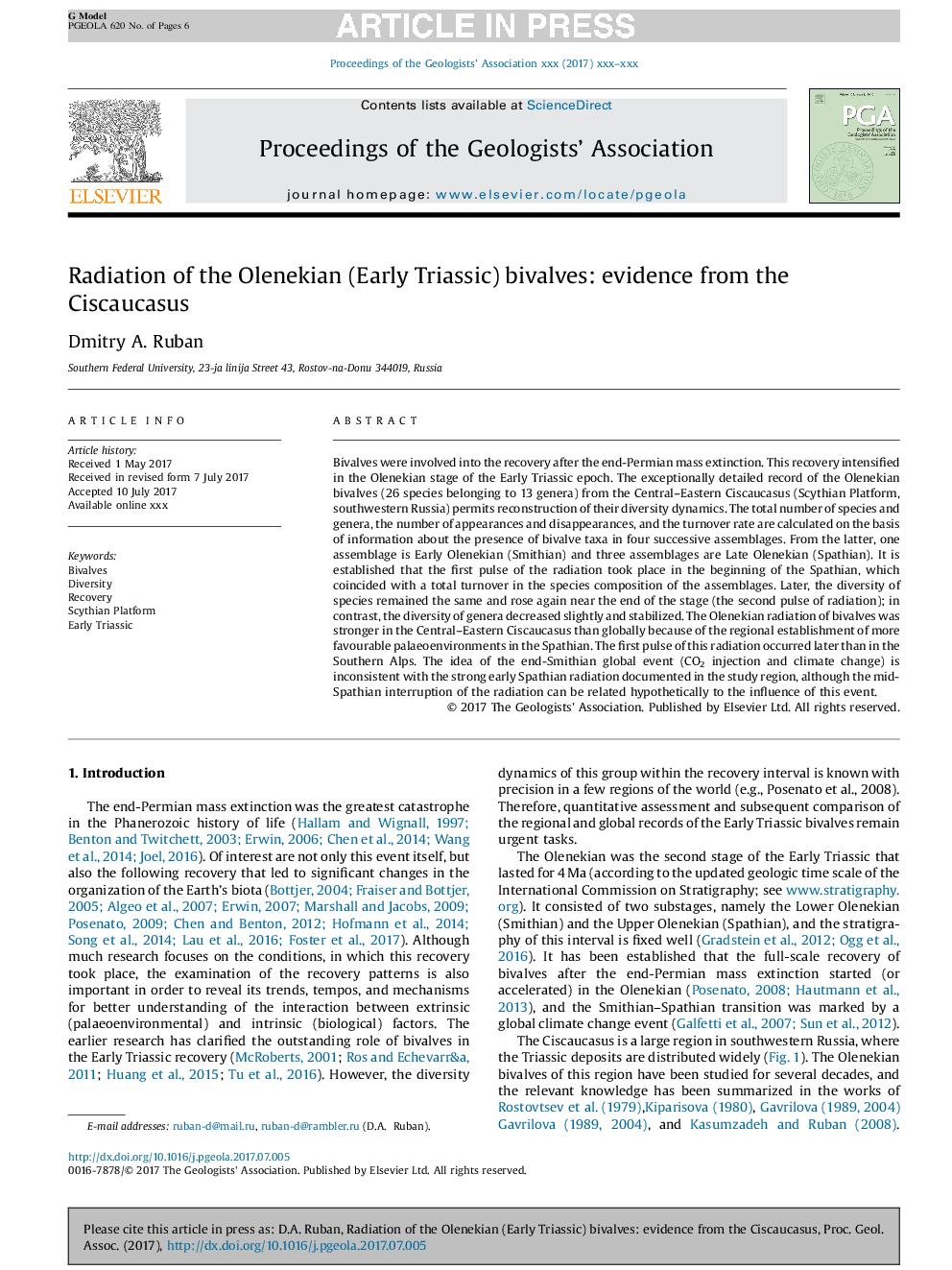| Article ID | Journal | Published Year | Pages | File Type |
|---|---|---|---|---|
| 8914625 | Proceedings of the Geologists' Association | 2017 | 6 Pages |
Abstract
Bivalves were involved into the recovery after the end-Permian mass extinction. This recovery intensified in the Olenekian stage of the Early Triassic epoch. The exceptionally detailed record of the Olenekian bivalves (26 species belonging to 13 genera) from the Central-Eastern Ciscaucasus (Scythian Platform, southwestern Russia) permits reconstruction of their diversity dynamics. The total number of species and genera, the number of appearances and disappearances, and the turnover rate are calculated on the basis of information about the presence of bivalve taxa in four successive assemblages. From the latter, one assemblage is Early Olenekian (Smithian) and three assemblages are Late Olenekian (Spathian). It is established that the first pulse of the radiation took place in the beginning of the Spathian, which coincided with a total turnover in the species composition of the assemblages. Later, the diversity of species remained the same and rose again near the end of the stage (the second pulse of radiation); in contrast, the diversity of genera decreased slightly and stabilized. The Olenekian radiation of bivalves was stronger in the Central-Eastern Ciscaucasus than globally because of the regional establishment of more favourable palaeoenvironments in the Spathian. The first pulse of this radiation occurred later than in the Southern Alps. The idea of the end-Smithian global event (CO2 injection and climate change) is inconsistent with the strong early Spathian radiation documented in the study region, although the mid-Spathian interruption of the radiation can be related hypothetically to the influence of this event.
Related Topics
Physical Sciences and Engineering
Earth and Planetary Sciences
Geology
Authors
Dmitry A. Ruban,
